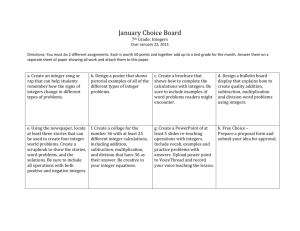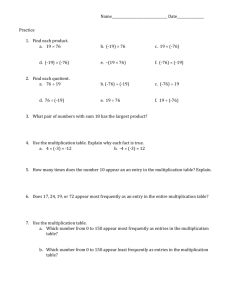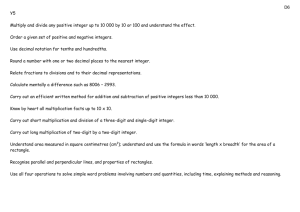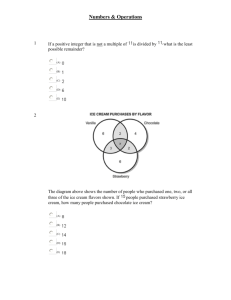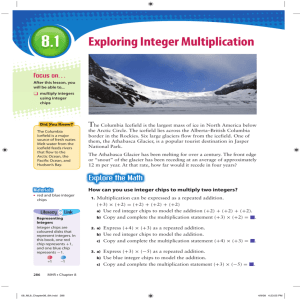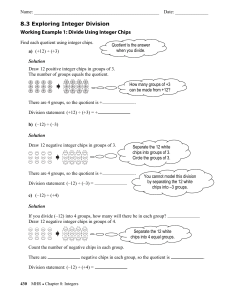710 Module 2 Newsletter
advertisement
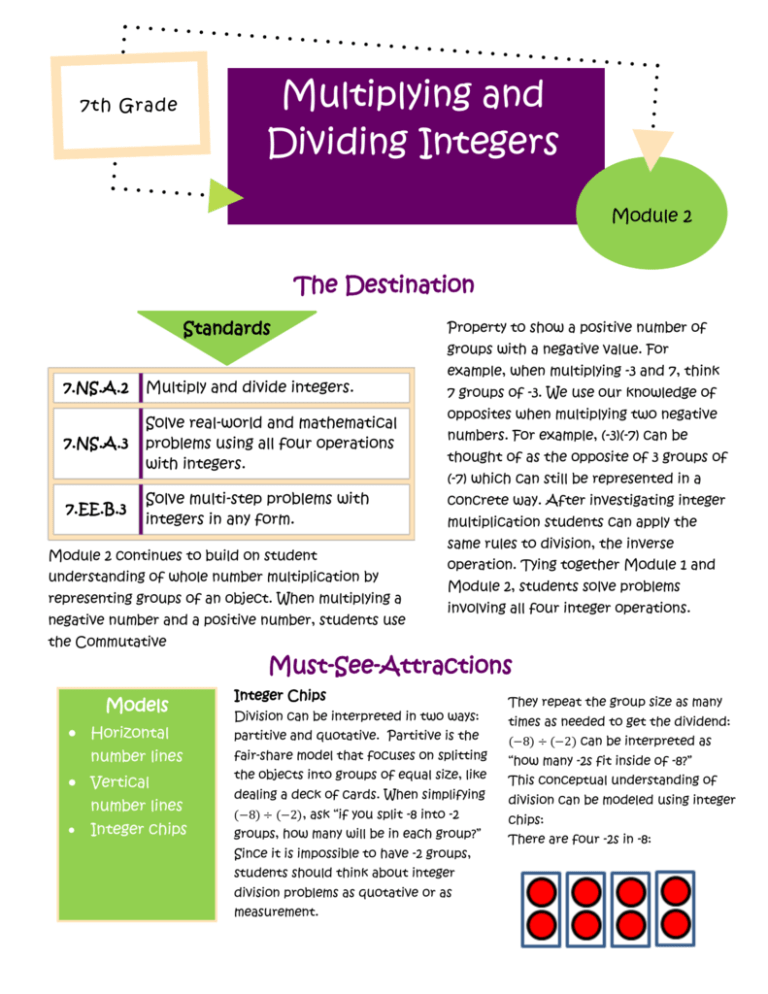
Multiplying and Dividing Integers 7th Grade Module 2 The Destination Standards 7.NS.A.2 Multiply and divide integers. 7.NS.A.3 Solve real-world and mathematical problems using all four operations with integers. 7.EE.B.3 Solve multi-step problems with integers in any form. Module 2 continues to build on student understanding of whole number multiplication by representing groups of an object. When multiplying a negative number and a positive number, students use the Commutative Models Horizontal number lines Vertical number lines Integer chips Property to show a positive number of groups with a negative value. For example, when multiplying -3 and 7, think 7 groups of -3. We use our knowledge of opposites when multiplying two negative numbers. For example, (-3)(-7) can be thought of as the opposite of 3 groups of (-7) which can still be represented in a concrete way. After investigating integer multiplication students can apply the same rules to division, the inverse operation. Tying together Module 1 and Module 2, students solve problems involving all four integer operations. Must-See-Attractions Integer Chips Division can be interpreted in two ways: partitive and quotative. Partitive is the fair-share model that focuses on splitting the objects into groups of equal size, like dealing a deck of cards. When simplifying (−8) ÷ (−2), ask “if you split -8 into -2 groups, how many will be in each group?” Since it is impossible to have -2 groups, students should think about integer division problems as quotative or as measurement. They repeat the group size as many times as needed to get the dividend: (−8) ÷ (−2) can be interpreted as “how many -2s fit inside of -8?” This conceptual understanding of division can be modeled using integer chips: There are four -2s in -8: Related Places to Visit Number lines Write a multiplication equation and comparison statement to relate the temperatures in Anchorage, Alaska to Winnepeg, Canada. (-15 x 2 = -30; Anchorage is two times as cold as Winnepeg) For clip art or worksheets: http://www.commoncoresheets.com/Math/Temperature /Finding%20Differences%20(With%20Thermometer)/Engl ish/All.pdf Data Analysis PGA Golf Scores (Round 1) (−15)(2 ) = −30 −5, 0, 1, 2, −4, 1, −1, −1, 0 , 3, −1, 4, 5, 8, 6 1) Plot these scores on a line plot. 2) Describe the data using measures of center (mean, median, mode). 3) Describe the variability of the data (range, MAD). Rates EXIT Jet Blue airplane’s altitude changed -378 over 7 minutes. Skyliner’s airplane changed PARCC -215 over 5 minutes. What is the mean change of altitude in feet per minute for each airplane? Which plane is descending faster? Exponent Patterns Evaluate and discuss the answers to the following: SMP 1. 34 2. the opposite of 34 3. −34 4. (−3)4


